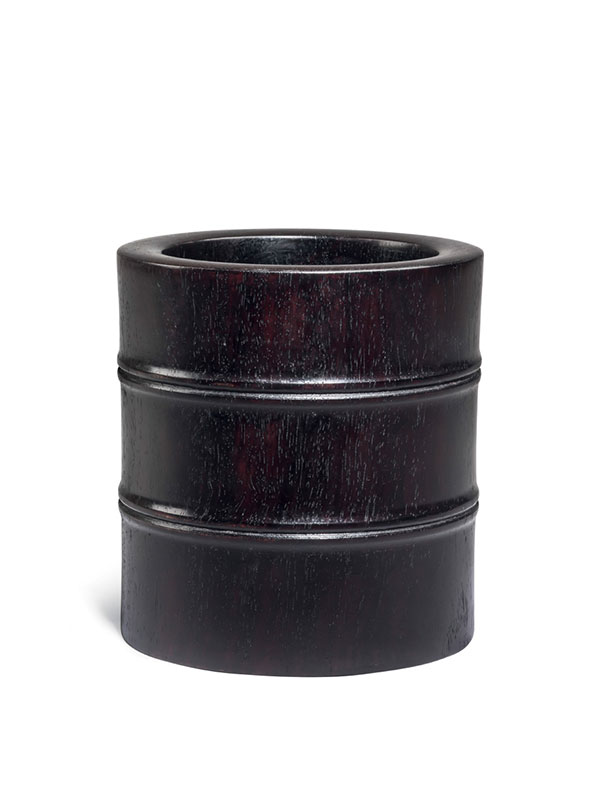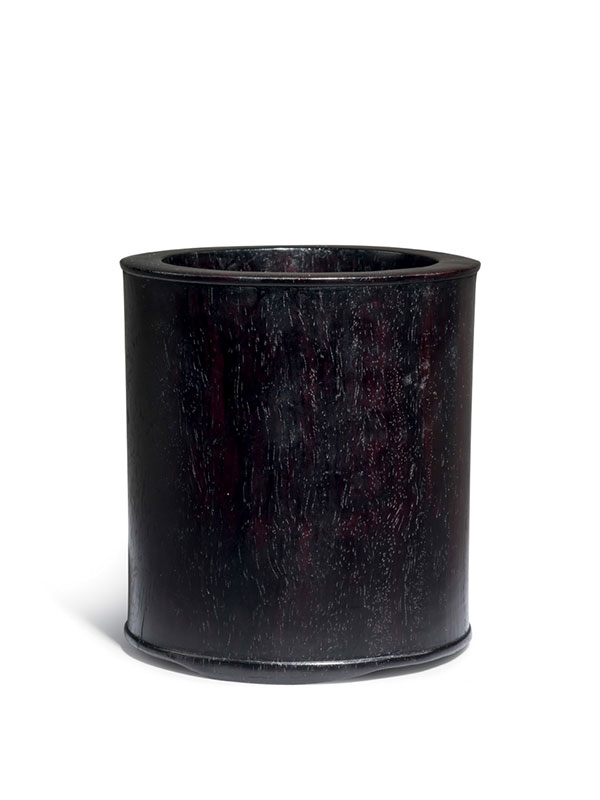Two zitan brush pots
Two zitan brush pots of cylindrical form, one plain and supported on three integral short feet, the straight sides terminating in a beaded rim. The second brush pot has sides carved as bamboo nodes, the base is shaped as an outer ring that is slightly concave and has a single central hole, which is plugged with a wood spigot. The wood of both brush pots is well polished and has the purplish hue typical of zitan, with characteristic minute silvery streaks.
These well-proportioned brush pots are fine examples of scholar’s objects. Brush pots are receptacles for the many brushes used by Chinese scholars for writing and painting. Such brush pots adorning a scholar’s table are an essential part of the scholar’s studio. Zitan (‘purple sandalwood’) was the finest type of wood at the time, the densest and slowest growing of hardwoods used to create objects for the scholar’s desk. Zitan brush pots of such large size occur rarely due to size limitations and the delicate nature of zitan. An 18th century zitan brush pot of oval form, with a plain body and beaded edges, is in the Vok collection.[1] Another 18th century brush pot made of jichimu, similar in shape, beaded edges and bracket feet, is illustrated in Wood from the Scholar’s Table: Chinese Hardwood Carvings and Scholar’s Articles.[2]
- Grindley, N. Pure Form: Classical Chinese Furniture – Vok Collection, Munich, 2004, no. 62
- Piccus, R. P. ed. Wood from the Scholar’s Table: Chinese Hardwood Carvings and Scholar’s Articles, Gulliver Books, Hong Kong, 1984, no.17


